This creamy Radish Mash is a keto-friendly, nightshade-free alternative to the typical mashed potatoes, in addition to being even easier to make (no gluey taters here!). Ready in just half an hour with fresh spring radishes, these lightly mashed radishes are a healthy pink twist on the weeknight staple.
If you like creamy sides, try my almond milk mashed potatoes and my sauteed butternut squash.
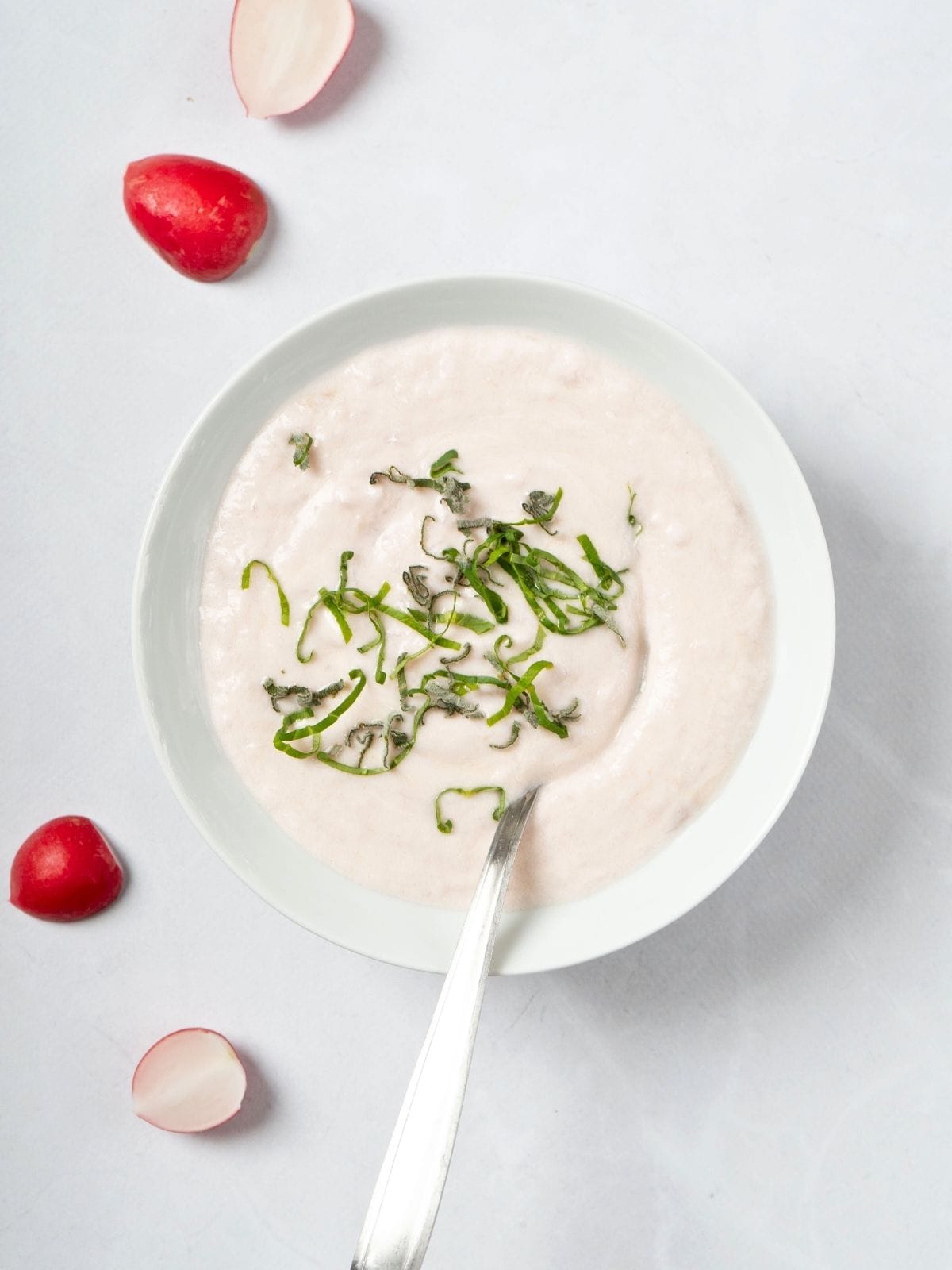
Jump to:
✔️ Why This Recipe is Great
Low Histamine Side Dish: radish mash cooks up in about 20 minutes, and can be seasoned with whatever low histamine herbs and spices you tolerate, and even flavored specifically to complement the rest of your meal.
Springtime Indulgence: the best time to make homemade radish mash is when radishes are in season from May to June in the US, but thanks to grocery stores you can still make this year-round (just note that it will taste the most mild with small fresh, local radishes). It's also a great way to use up any extra radishes!
Low Histamine Comfort Food: with all the restrictions, finding low histamine comfort foods can be hard, but these mashed radishes fulfill the requirements of warm, fluffy, savory, and satisfying.
🥬 Ingredients

Red Radishes: these small, mild vegetables are common in farmer's markets and supermarkets in the springtime, and though they're usually just relegated to garnish status, they can also be used to make a great mashed potato substitute that pairs beautifully with all sorts of brassica vegetables and stewed greens.
Fresh Garlic: this optional ingredient adds an umami element to the mash that really rounds out the overall flavor, and complements meats and root vegetables as a side dish.
Heavy Cream: for a dairy-free version you can use coconut cream or another higher-fat dairy alternative (or even more oil), but this is what helps balance out the slight sharpness from the boiled radishes. Try whipping it ahead of time to add a fluffier texture to your radish mash!
Oil: I used avocado oil for this recipe, but you can use any neutral-tasting oil you tolerate. Ghee or butter are other good options if you tolerate dairy, but check out my post on low histamine oils for more ideas.
See recipe card for exact ingredients and quantities.
📝 Substitutions
- Radish - I haven't tried making this with other types of radish like daikon radish, but let me know if you give it a try (and how it turns out!). Radish is rather high in oxalate, so be aware of that if you have kidney issues, but the flavor is surprisingly pleasant and creamy - golden beets or turnip are the only alternatives you may be able to use to the common red radish, but note that the flavor will definitely vary.
- Cream - though technically you could leave this out or swap it for water, great alternatives include coconut cream, macadamia nut milk, or even equal parts tahini + water.
- Oil - you could leave out the oil, or instead of avocado oil you could use olive oil, ghee, or even flax seed oil for some extra anti-inflammatory omega 3 fats.
Try my mashed purple sweet potatoes for another nightshade-free variation on the usual mashed potatoes.
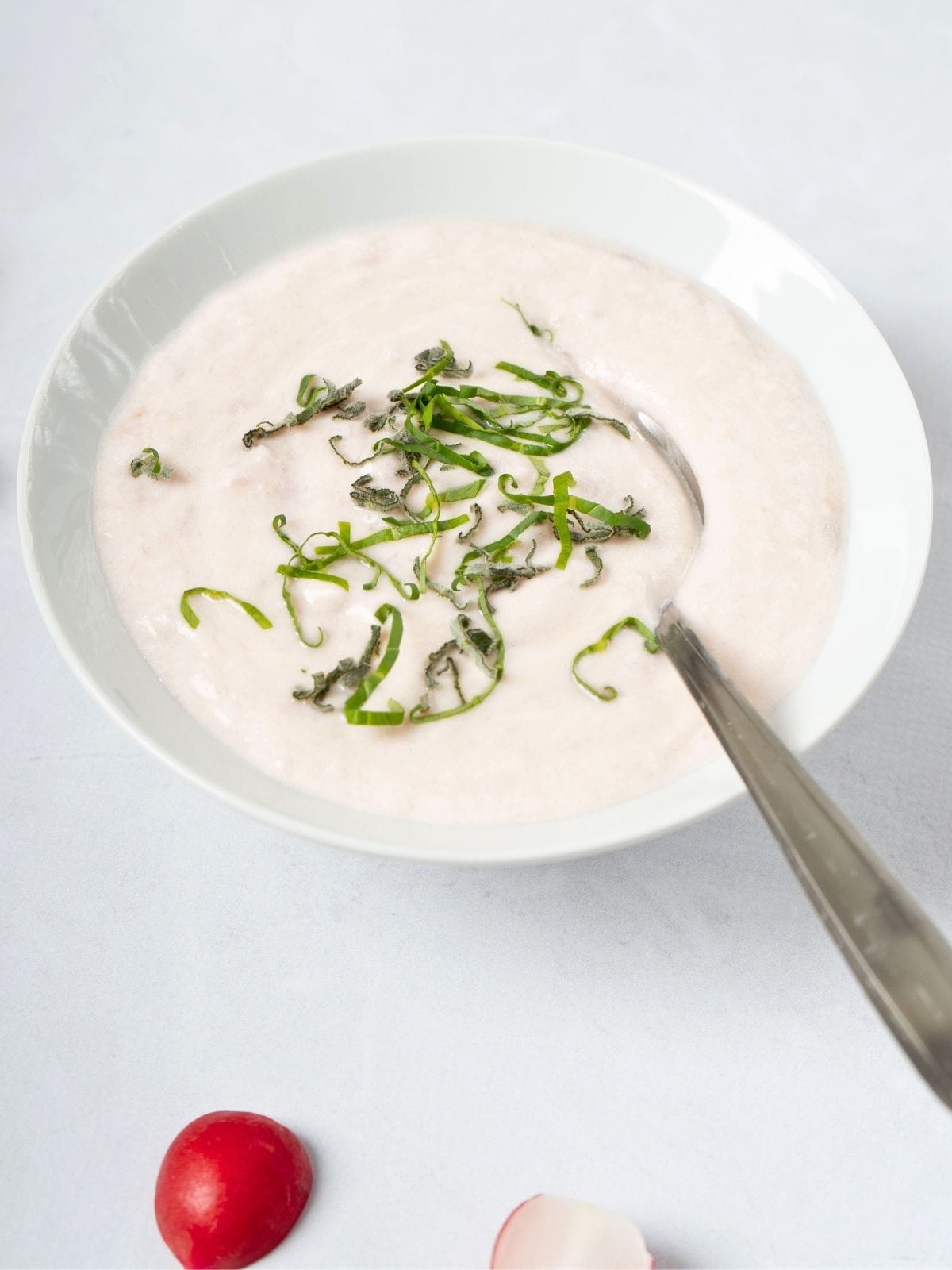
🍽 How to Use Radish Greens
Fresh radish greens shouldn't be tossed out; they're a nutritious gem in the world of leafy vegetables. They've got a peppery punch similar to arugula, which can add a kick to salads.
If you're not into raw greens, carefully wash and then sauté them with a bit of garlic and olive oil until they wilt down into a tender, milder version of themselves. They're also great tossed into a stir-fry or low histamine soup, contributing a nutritious boost. You can even whip up a zesty pesto with radish greens, too.
🥣 How to Make Mashed Radish (Step-by-Step)
Step 1. Start by washing the radishes and trimming off both ends. Cut each one in half or into thirds for even cooking (image 1).
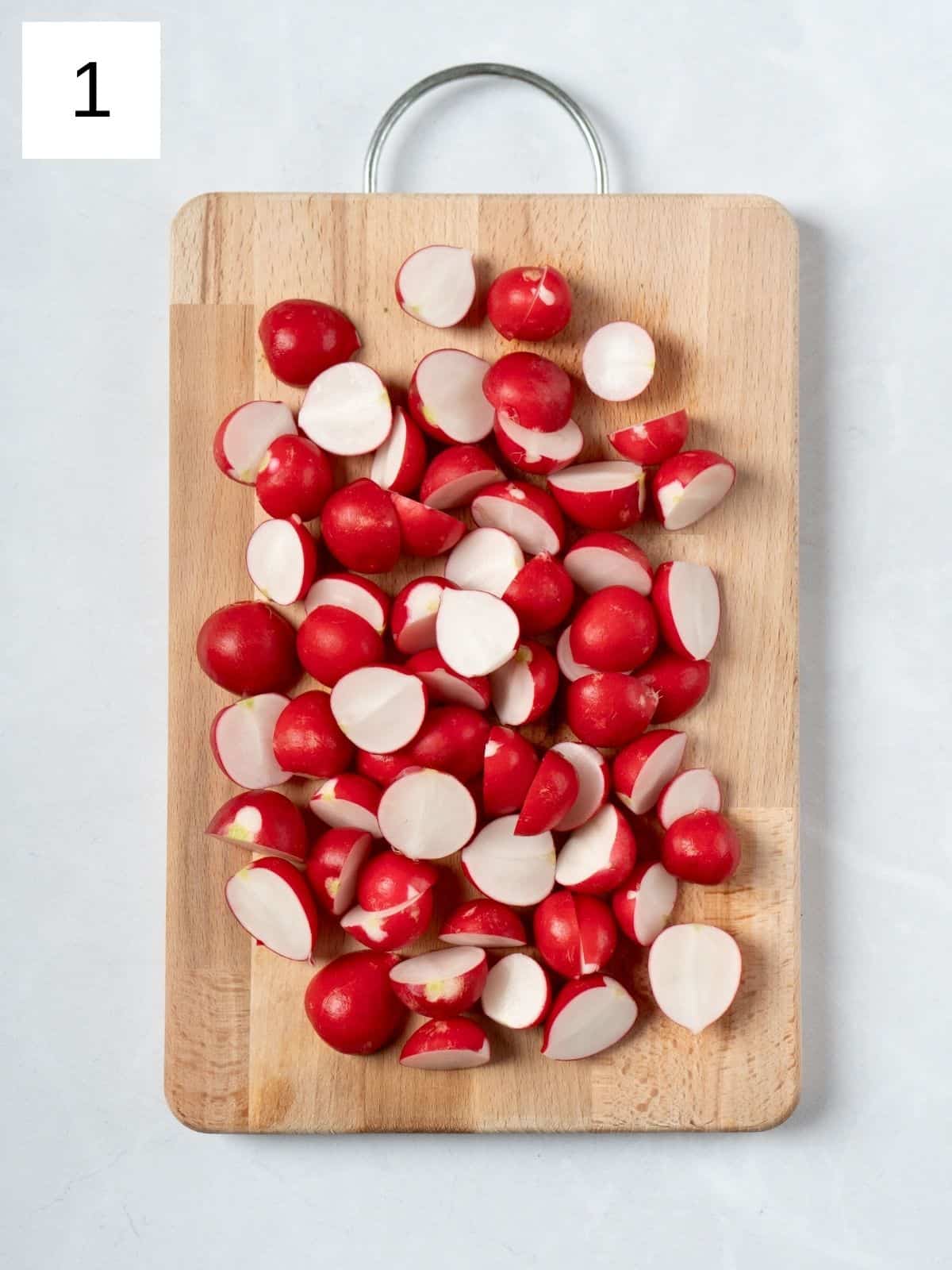
Step 2. Place your radishes in a pot and cover them with water (image 2). Bring everything to a boil and then reduce the heat, simmering until the radishes are tender, for about 15-20 minutes after the water hits a boil. While the radishes boil, grate your garlic on a microplane for even texture.
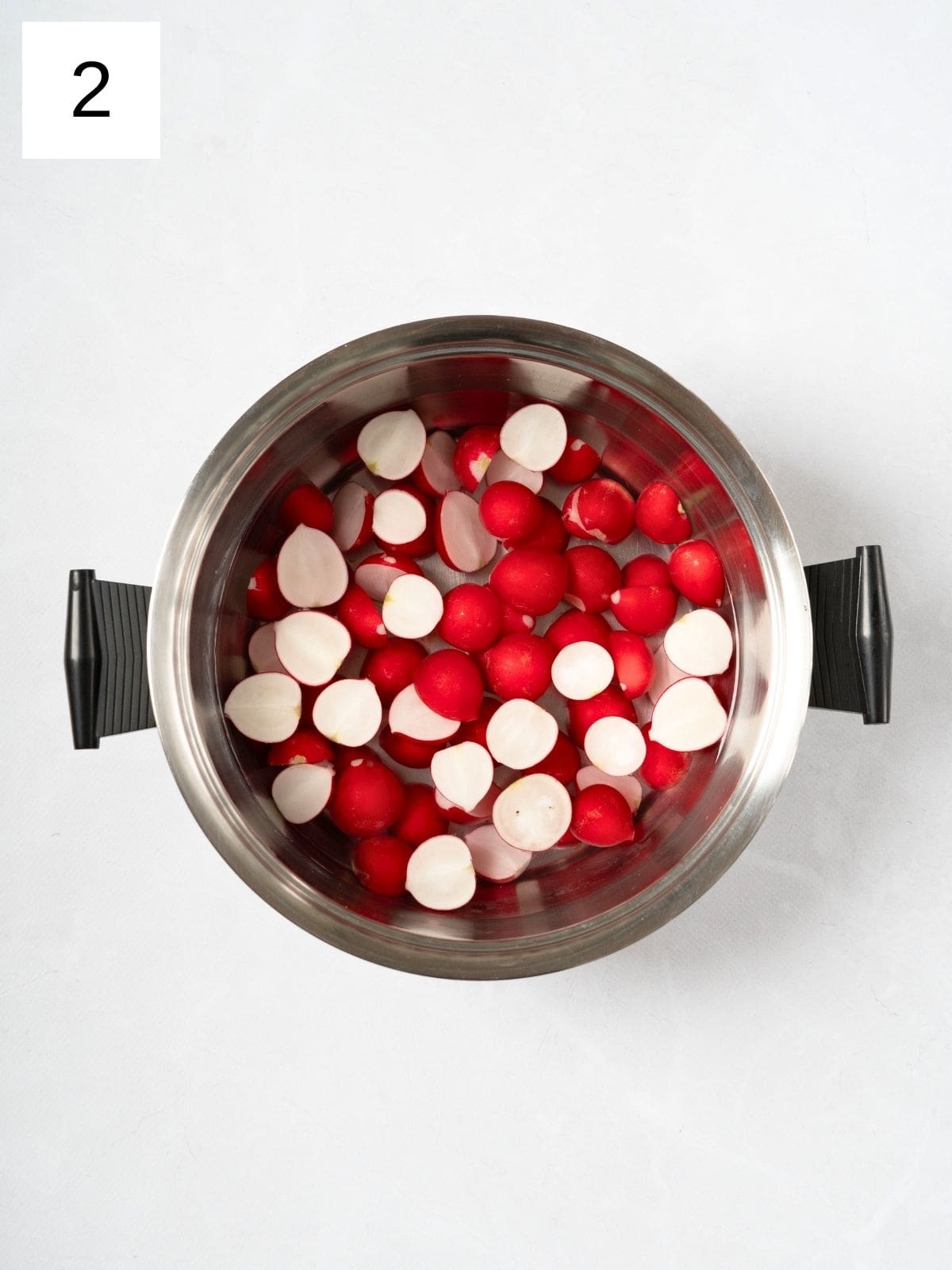
Step 3. Once the radishes are fork-tender (image 3), drain the water and return them to the pot. Let them sit for a minute to allow any excess moisture to evaporate.
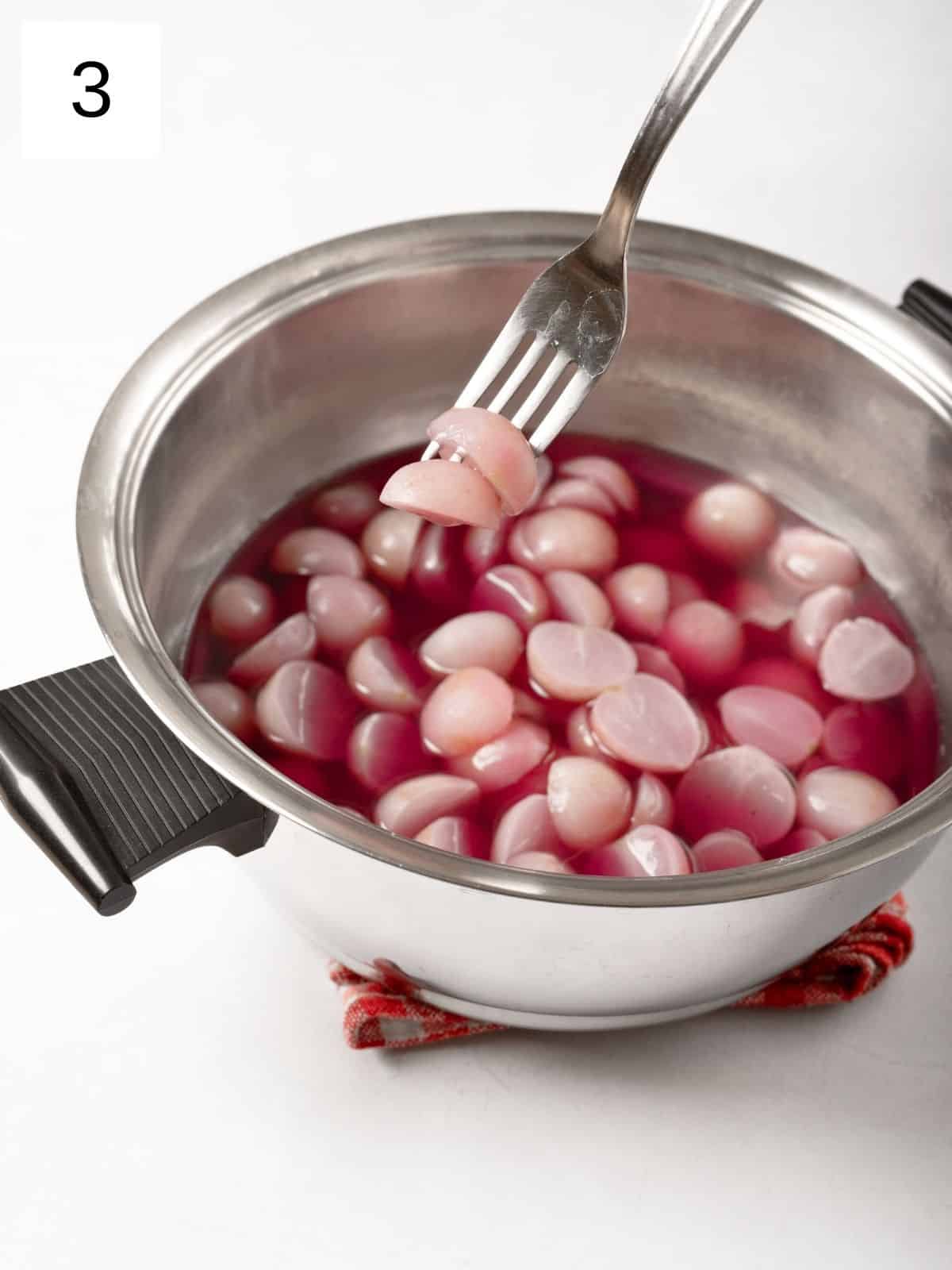
Step 4. Then add the butter or oil to the pot (image 4) with the radishes and begin mashing with a potato masher or fork (images 5 & 6). For a smoother texture, you can use a food processor or hand blender. If they're not able to be mashed with a hand blender, they didn't cook for long enough.
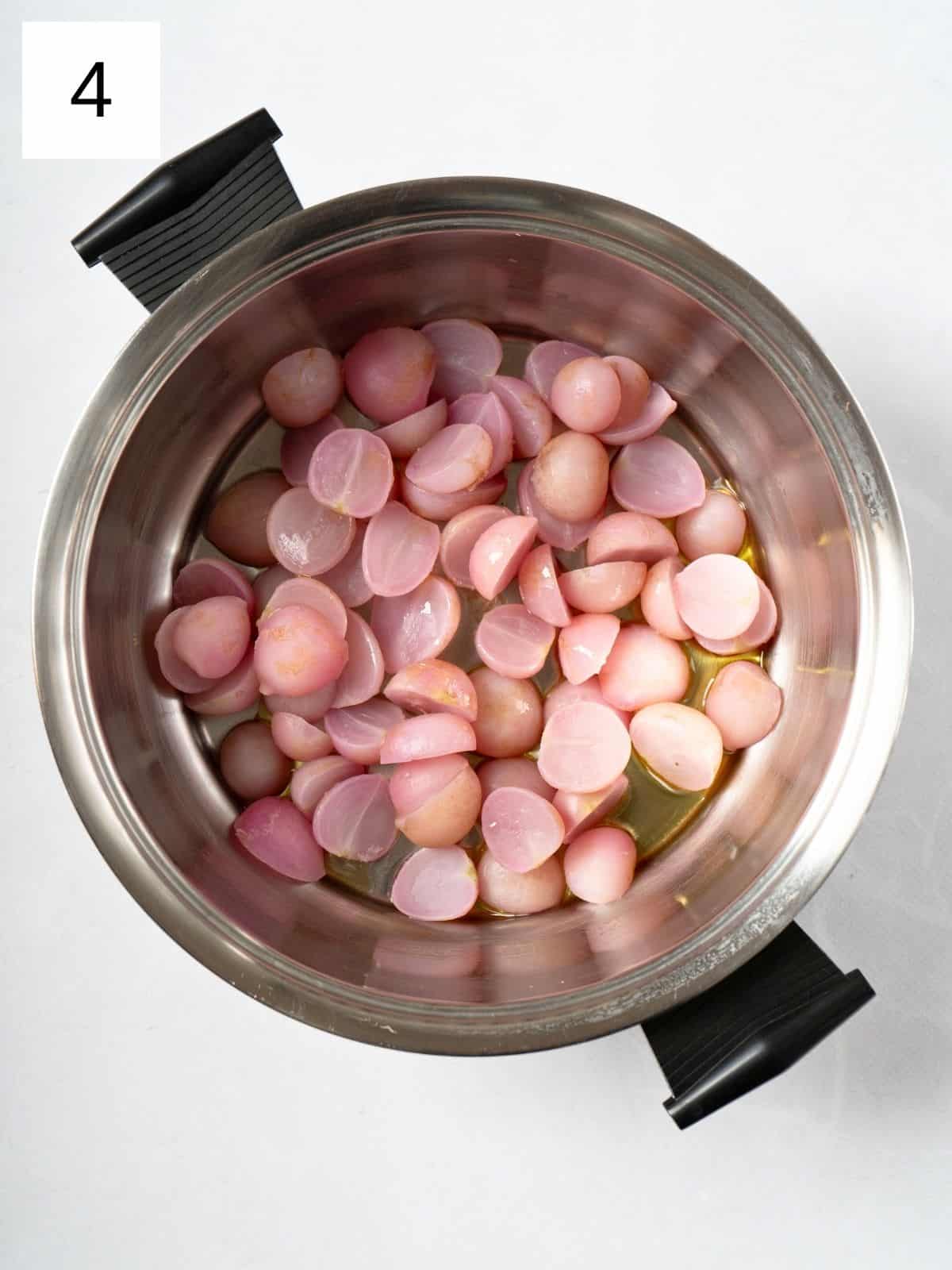
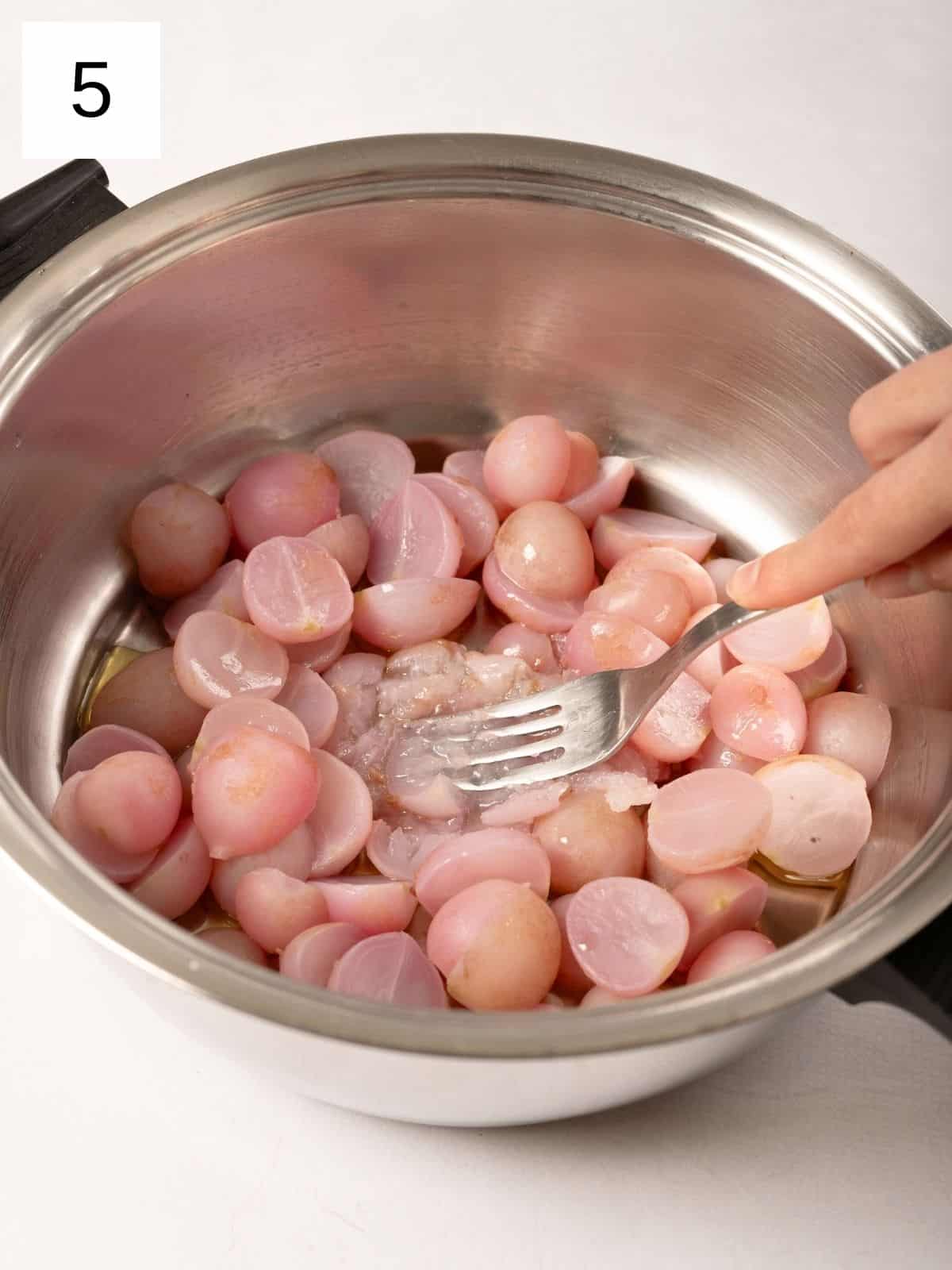
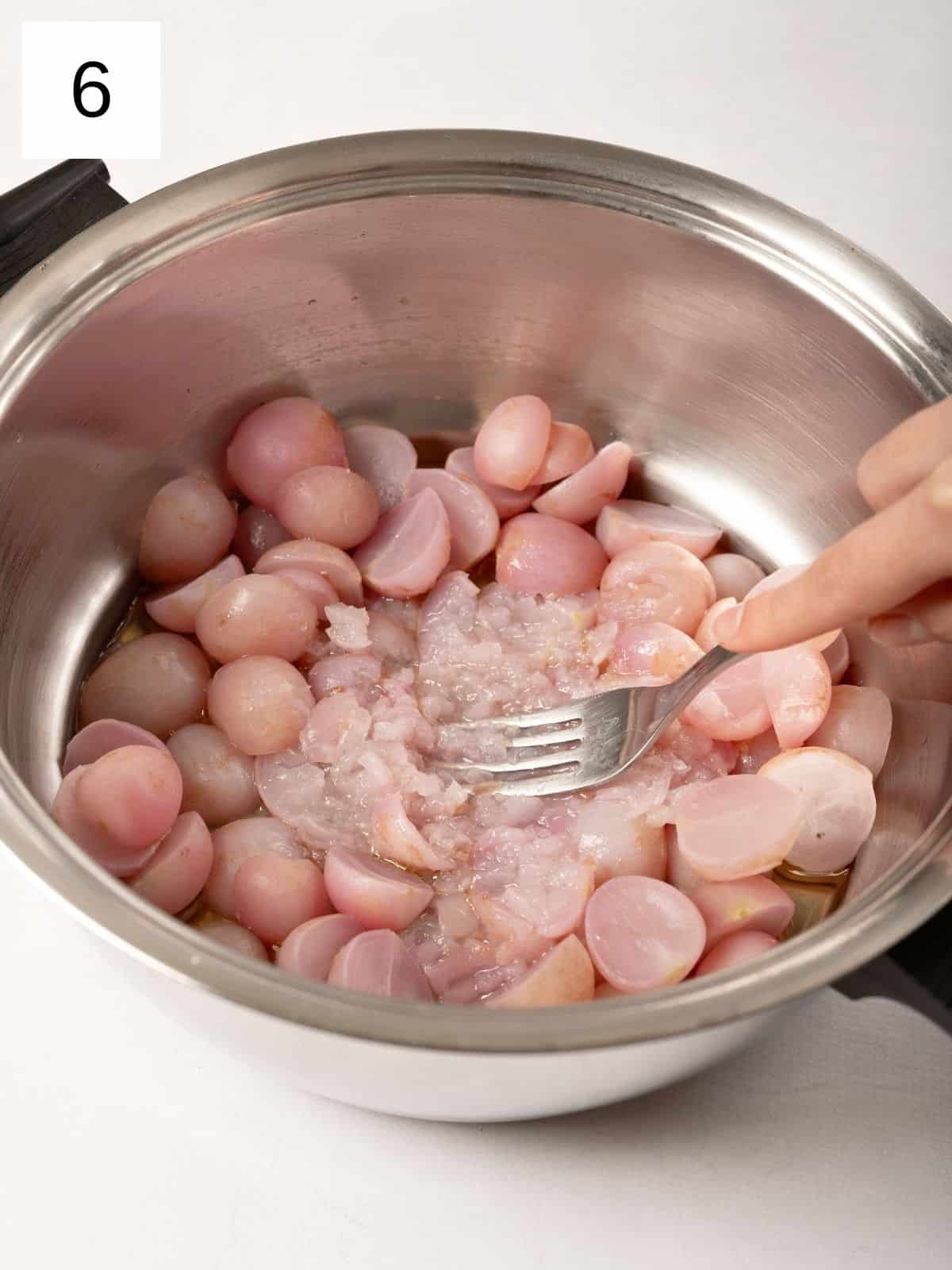
Step 5. Stir in the heavy cream and minced garlic, continuing to mash until you reach your desired consistency (image 7). If you prefer a thinner mash, you can add some more cream or half & half little by little.
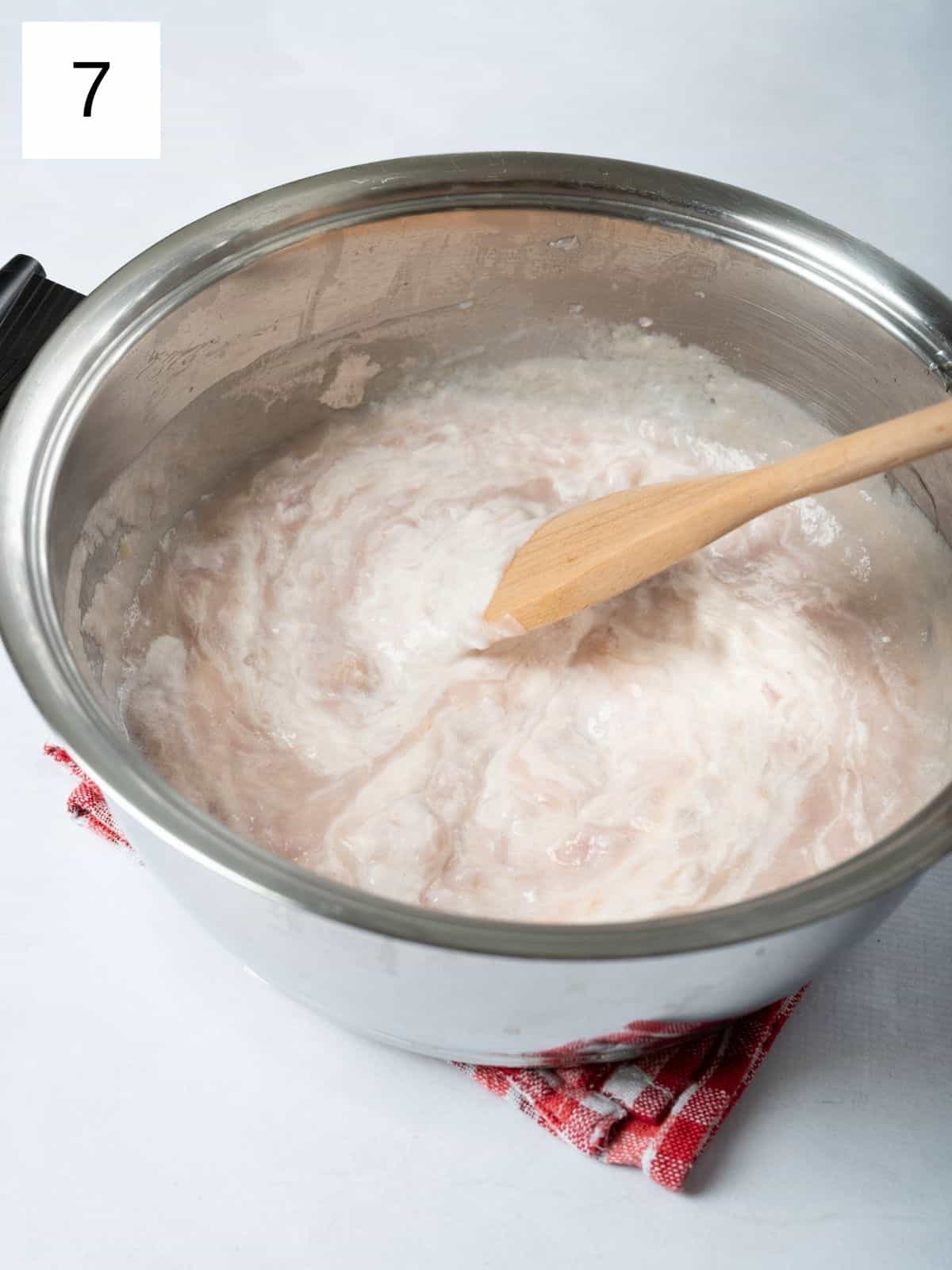
Step 6. Season the mash with salt to taste, mixing well to ensure the salt is evenly distributed (image 8). Transfer the radish mash to a serving bowl; if desired, garnish with fresh chopped herbs like chives, parsley, or dill for an extra pop of flavor and color.

🥘 Storage and Reheating
If you're not on a low histamine diet, these mashed red radishes can stay good in the fridge for up to 4 days when stored in an air-tight container and cooled to room temperature beforehand.
But if you want to freeze them, I recommend cooking them fully before freezing. They’ll stay good in the freezer for up to 2 months, though the texture will get a bit denser the longer they stay in there.
👨🏻🍳 Expert Notes & Tips
Troubleshooting Watery Texture: cook the radishes in a steamer or a baking sheet in the oven until fork tender and then follow the recipe process form there; this will give radishes with a less watery texture when mashing them. If you've already boiled them and they seem watery, drain them for an extra 5 minutes or spin them in a salad spinner for a minute before proceeding.
Added Flavor: to give a boost of flavor, roast your radishes before fully cooking them in your preferred method for the mash.
Topping Ideas: to further balance out and complement the flavors here, I highly recommend topping radish mash with chopped chives or green onion, parsley or cilantro, or even some of the stewed radish greens.
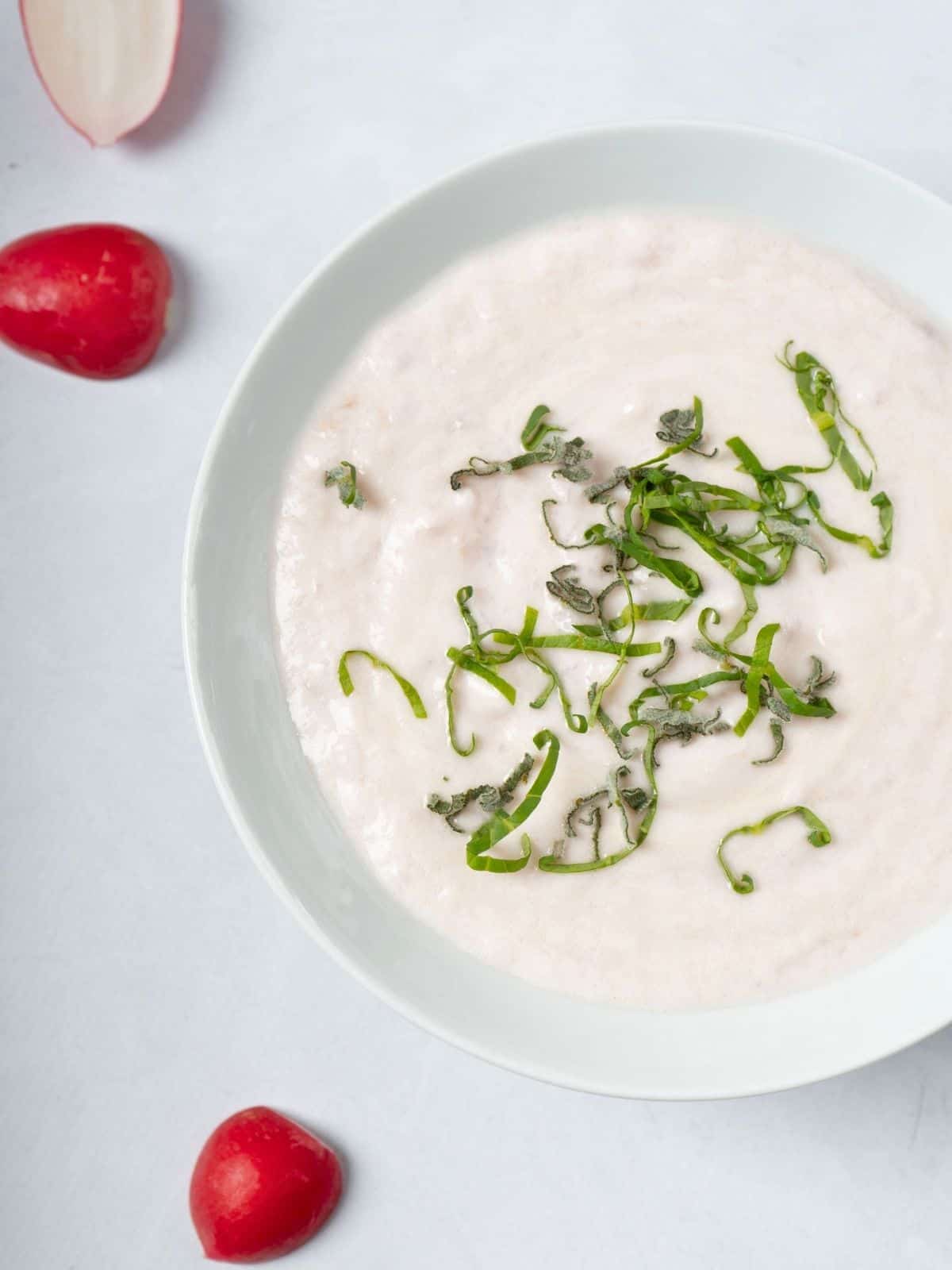
❓ What to Serve With Mashed Radish
🙋 Frequently Asked Questions
Yes, you can mash daikon radishes, though they're mush less mild than regular radish. They become tender when cooked and can be mashed similarly to potatoes, making them a low-carb alternative for those looking to reduce their starch intake.
Radishes are indeed keto-approved. They're low in carbohydrates, with a 1” radish having just 0.2 grams of carbohydrates, which makes them suitable for a ketogenic diet.
Cooked radish loses some of its peppery bite and develops a milder, slightly sweet and earthy flavor. The texture becomes softer and a bit juicy, which is a pleasant alternative to mashed potatoes.
Radishes can be used in a variety of ways; they can be eaten raw in salads or as a crunchy snack, quick-pickled for extra zing, roasted to bring out their sweetness, or even added to soups and stews. They can also be used as a low-carb potato substitute in dishes like mashed radishes or sliced and baked as radish chips.
The benefits of radishes include being a good source of vitamin C, which can help boost the immune system. They're also high in fiber, which aids in digestion, and contain compounds that may have anti-inflammatory and cancer-fighting properties. Additionally, radishes have a high water content, making them hydrating and low in calories.
📖 Recipe
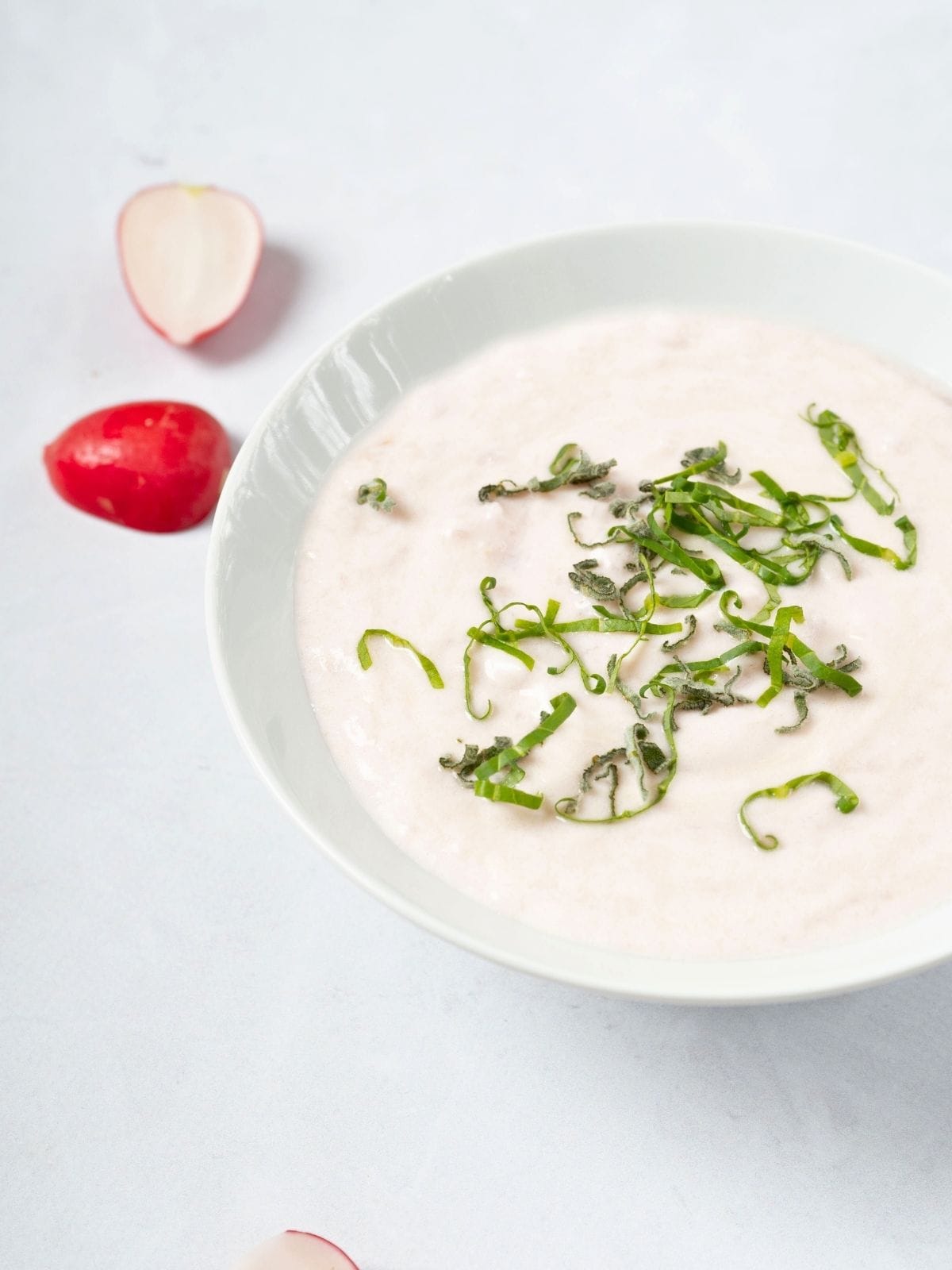
Easy Mashed Radish (Keto Radish Mash)
Equipment
- small pot
Ingredients
- 1 lb (450g) small radishes, trimmed and halved
- 2 Tablespoons butter or olive oil
- ¼ cup heavy cream
- 2-3 cloves (10g) garlic minced (optional; alt. 2 tablespoons toum sauce)
- ½ teaspoon salt more to taste
- Fresh herbs optional, for garnish
Instructions
- Start by washing the radishes and trimming off both ends. Cut each one in half or into thirds for even cooking.
- Place your radishes in a pot and cover them with water. Bring everything to a boil and then reduce the heat, simmering until the radishes are tender, for about 15-20 minutes after the water hits a boil. While the radishes boil, grate your garlic on a microplane for even texture.
- Once the radishes are fork-tender, drain the water and return them to the pot. Let them sit for a minute to allow any excess moisture to evaporate.
- Then add the butter or oil to the pot with the radishes and begin mashing with a potato masher or fork. For a smoother texture, you can use a food processor or hand blender. If they're not able to be mashed with a hand blender, they didn't cook for long enough.
- Stir in the heavy cream and minced garlic, continuing to mash until you reach your desired consistency. If you prefer a thinner mash, you can add some more cream or half & half little by little.
- Season the mash with salt to taste, mixing well to ensure the salt is evenly distributed.Transfer the radish mash to a serving bowl; if desired, garnish with fresh chopped herbs like chives, parsley, or dill for an extra pop of flavor and color.

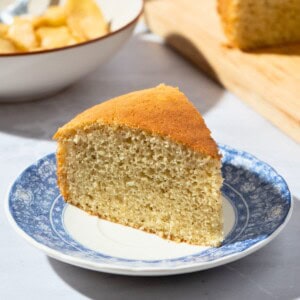











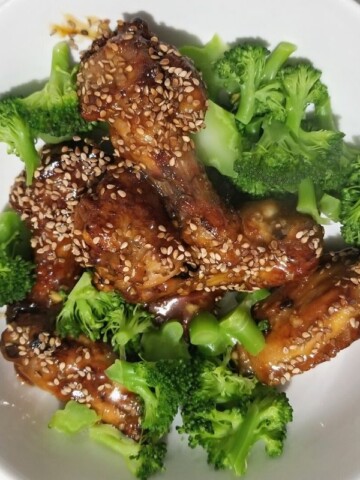




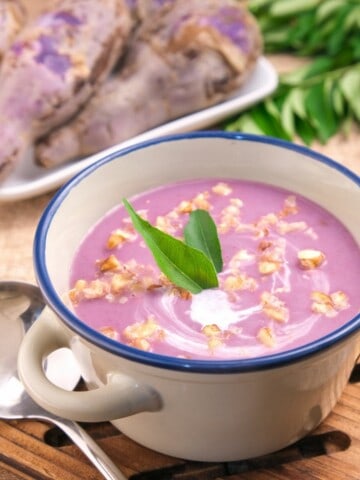
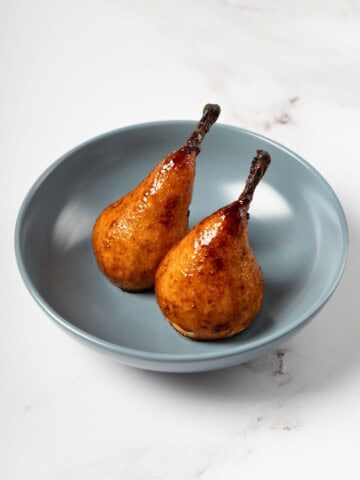
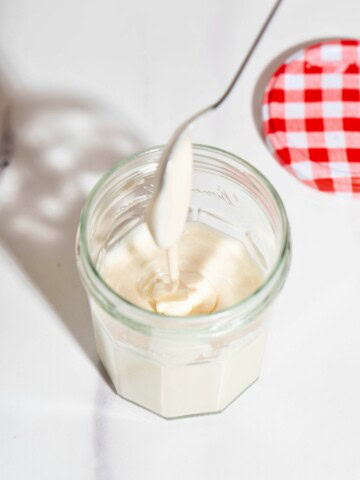
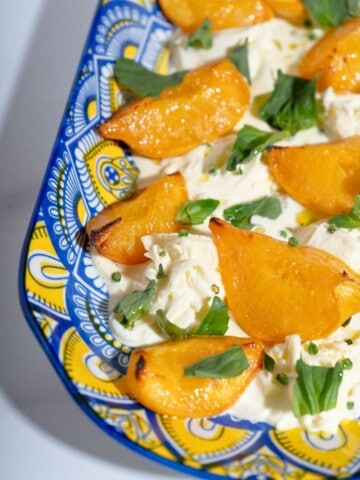
Comments
No Comments